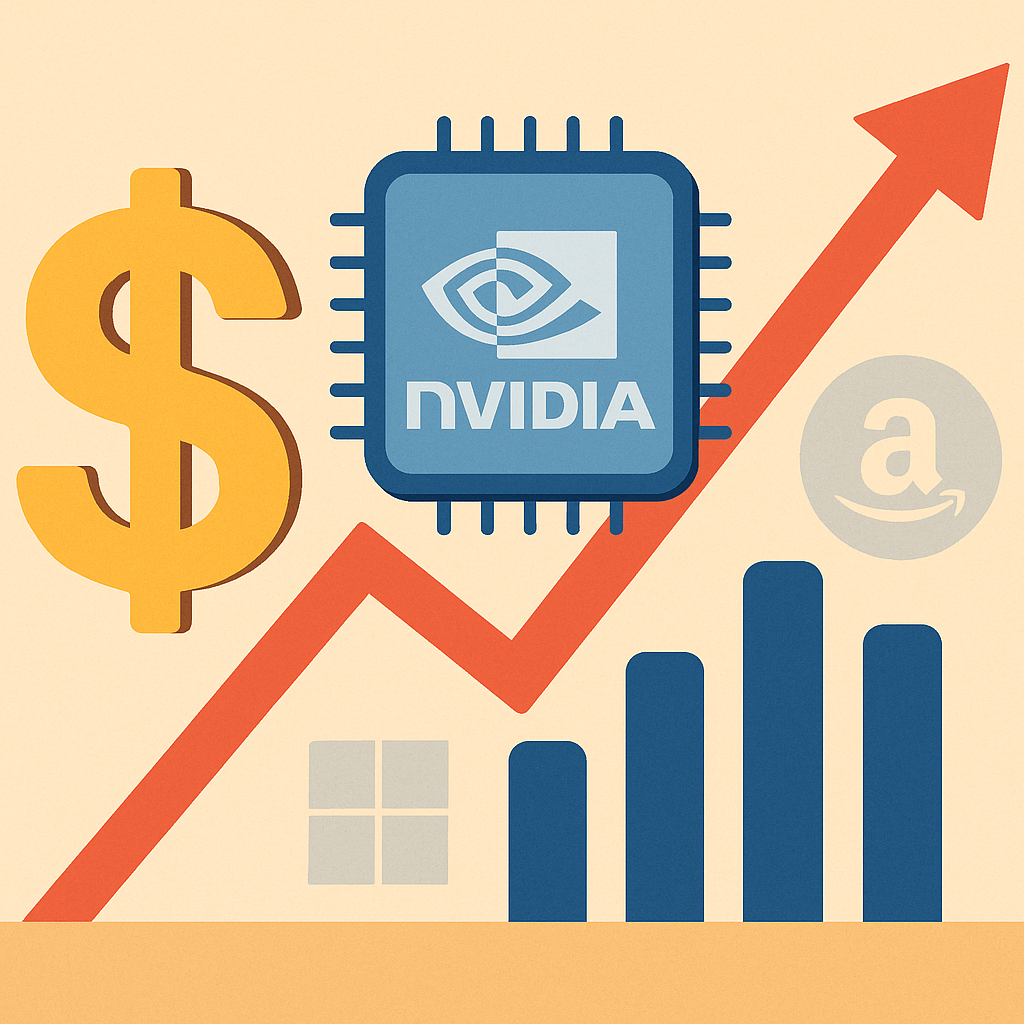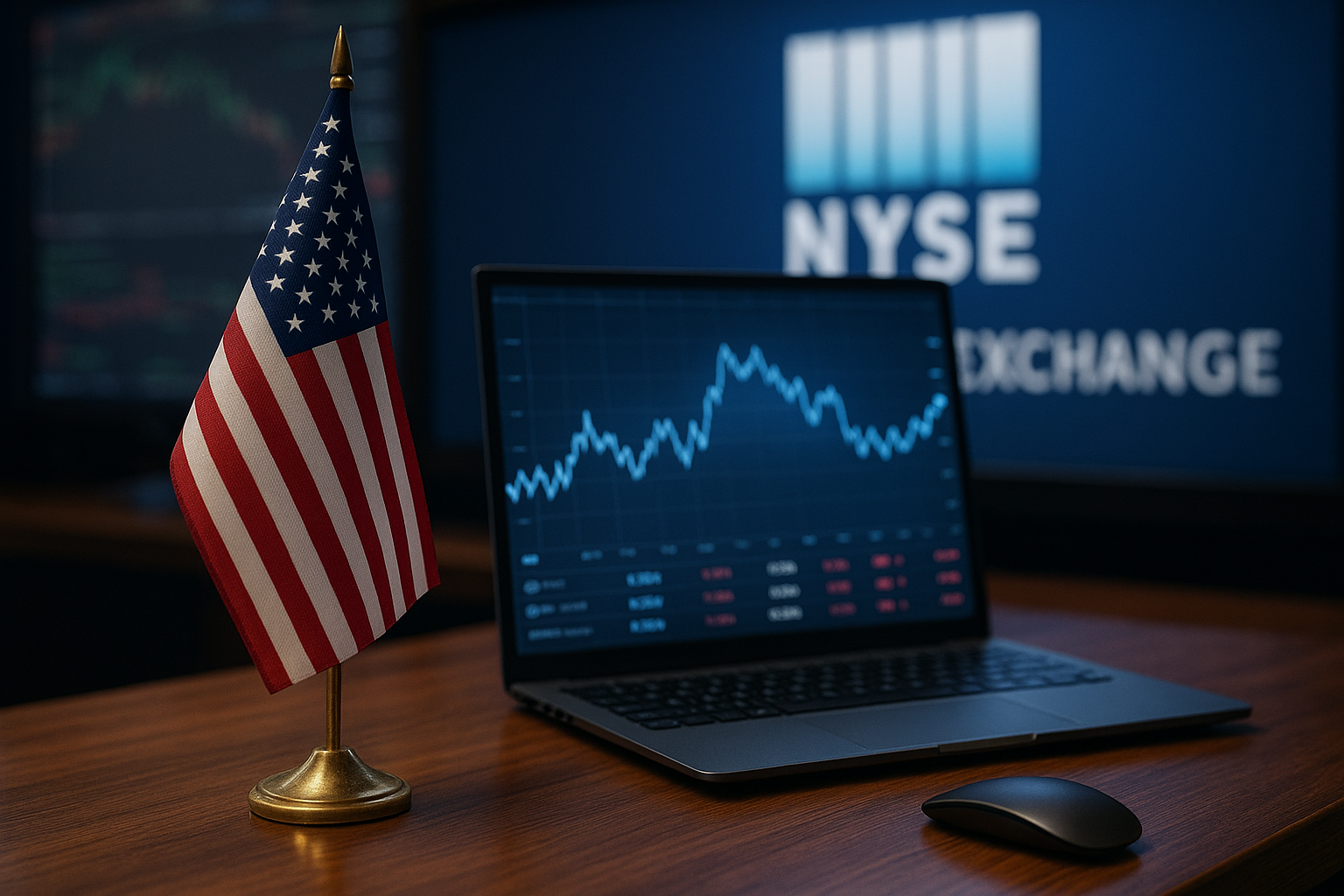As the AI-fueled rally pushes U.S. equities into record territory, Nvidia has once again stunned Wall Street—briefly crossing the $4 trillion market capitalization threshold and cementing its role as the undisputed engine of this bull market.
Shares of Nvidia (NASDAQ: NVDA) surged earlier this week, driving the chip giant to an intraday valuation north of $4 trillion before pulling back slightly. The milestone places Nvidia among the most valuable companies on the planet, trailing only Microsoft and Apple in market cap. What’s more, the rally didn’t happen in isolation—tech titans like Microsoft, Meta, Alphabet, and Amazon also posted record highs, reinforcing the market-wide momentum behind AI infrastructure.
For investors, this development is more than a headline. It’s a signal—a signal that AI’s golden era isn’t just on the horizon, it’s actively reshaping capital flows, sector leadership, and long-term strategies.
Nvidia’s $4 Trillion Moment: A Snapshot of the Shift
Nvidia’s meteoric rise is anchored in its dominance of the AI hardware ecosystem. Its H100 and upcoming Blackwell chips are powering nearly every major AI initiative, from OpenAI’s GPT models to enterprise deployments at Microsoft, Meta, and Amazon Web Services.
According to Bloomberg, Nvidia’s revenue has more than tripled year-over-year, driven by explosive demand from hyperscalers and sovereign cloud projects. Its latest quarterly results showed data center revenue reaching $22.6 billion, up over 400% from the same period last year.
The company’s price-to-earnings ratio remains lofty—but investors are betting that the AI wave has the legs to justify premium multiples.
Meanwhile, the Nasdaq Composite and S&P 500 are hovering at all-time highs, buoyed by tech-heavy gains. AI optimism, combined with softening inflation data and dovish undertones from the Fed, has created a powerful tailwind for risk-on positioning.
Why This Matters for Investors
The significance of Nvidia’s $4 trillion valuation goes beyond optics. It’s emblematic of a broader capital reallocation toward AI infrastructure, semiconductors, and high-performance computing.
Here’s why investors should care:
- Tech Concentration Intensifies: According to Goldman Sachs, the “Magnificent Seven” now account for 35% of the S&P 500’s total market cap. While these gains have delivered handsome returns, they also concentrate portfolio risk.
- Peripheral Players Are Gaining Traction: Beyond Nvidia, companies building supporting technologies—such as cooling systems, edge compute hardware, photonics, and memory modules—are seeing increased investor interest. Stocks like Super Micro Computer (SMCI) and Marvell Technology (MRVL) have surged in parallel.
- Geopolitical & Regulatory Risk Looms: As the U.S. tightens chip export restrictions and China accelerates domestic AI initiatives, investors must weigh the long-term impact of supply chain nationalism and the risk of export controls hitting key players.
Future Trends to Watch
1. AI Infrastructure Buildout: Analysts at Bank of America estimate that global AI infrastructure spending will exceed $400 billion annually by 2027. Data centers, power consumption, and cooling systems will all see exponential capex growth.
2. Cloud + AI Convergence: Big Tech firms are embedding Nvidia’s GPU clusters into cloud offerings, allowing enterprises to rent compute power for training large models—democratizing access to advanced AI tools.
3. Hardware Differentiation: While Nvidia dominates now, rivals like AMD (MI300X) and custom chips from Google (TPUs) and Amazon (Inferentia) are developing rapidly. Investors should monitor how much share these players can reclaim.
4. AI Regulation & Risk: The European Union and the U.S. are both advancing AI governance frameworks. Any sweeping regulation—especially around AI safety or monopolistic behavior—could slow deployment or hurt margins.
Key Investment Insight
Nvidia’s $4 trillion milestone is more than symbolic—it marks the maturity of AI as a structural force in capital markets. Investors looking for upside should consider:
- Diversified exposure to AI infrastructure (via ETFs like SOXX, SMH, or thematic plays like BOTZ).
- Second-tier semiconductor names or ecosystem suppliers with solid fundamentals.
- Risk hedging via volatility products or sector rotation strategies as valuations climb.
It’s equally important to avoid FOMO-chasing at stretched multiples. Selectivity will be key in navigating the next leg of the AI-driven market cycle.
For daily updates, deep-dive analysis, and credible, investor-focused reporting on the tech that’s reshaping tomorrow’s markets—stay with MoneyNews.Today, your trusted source for what matters now and what’s next.





